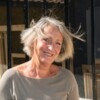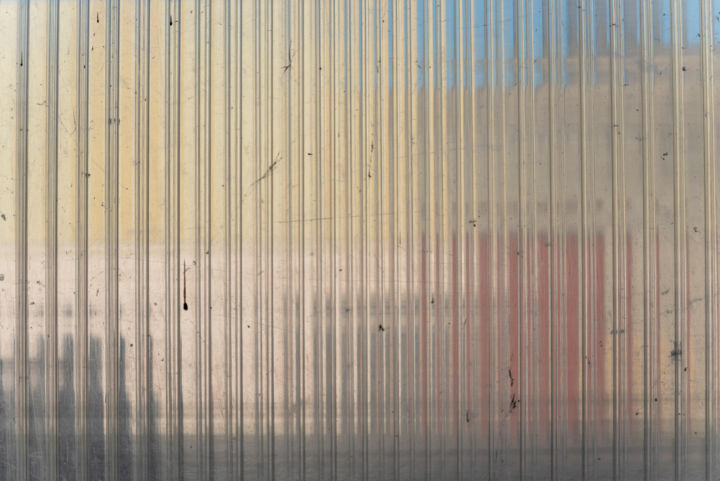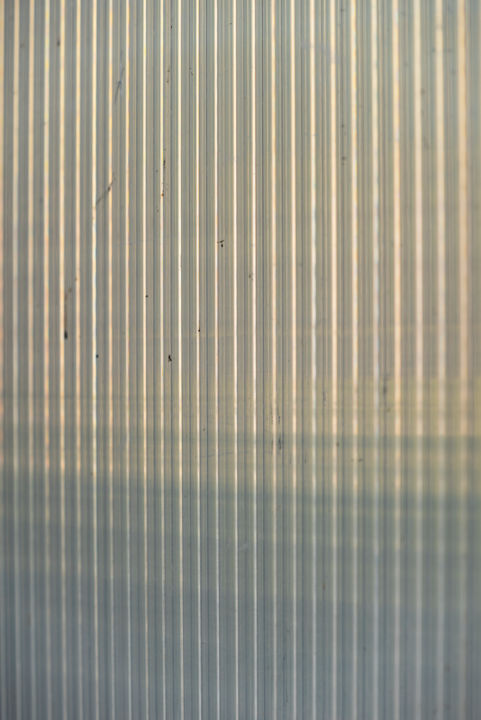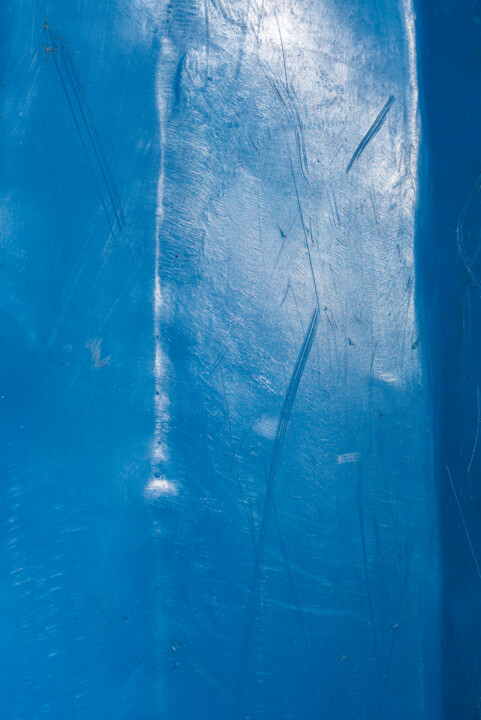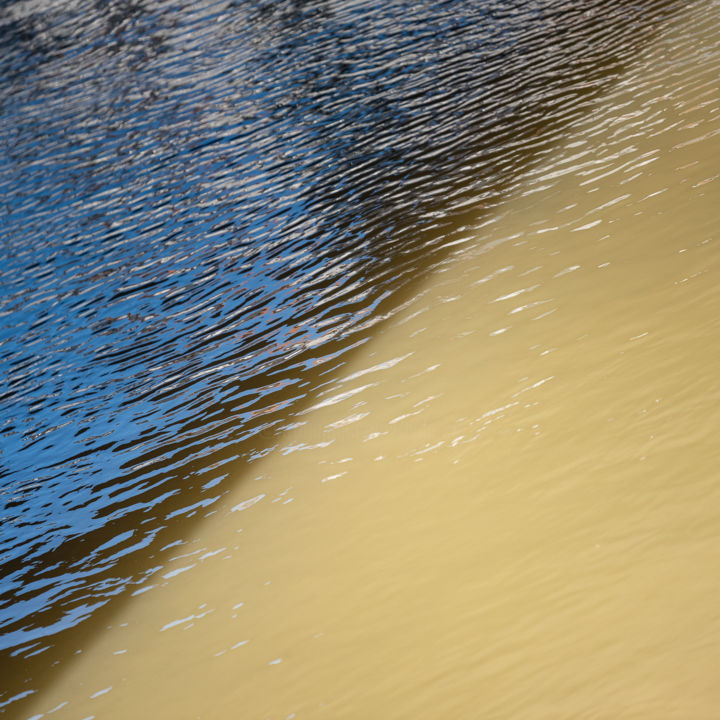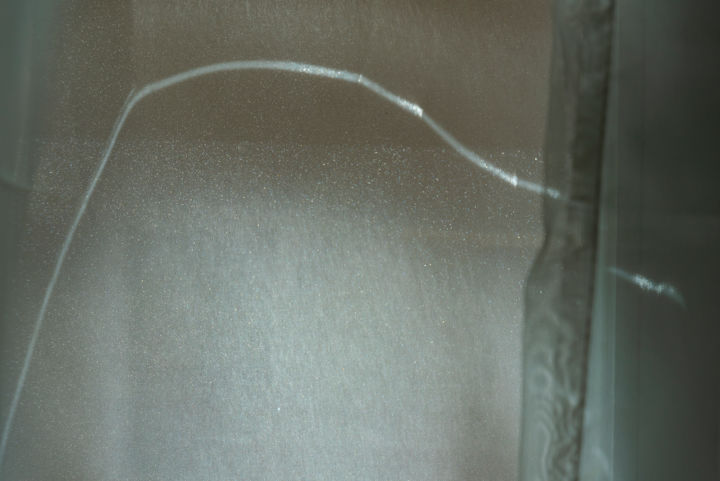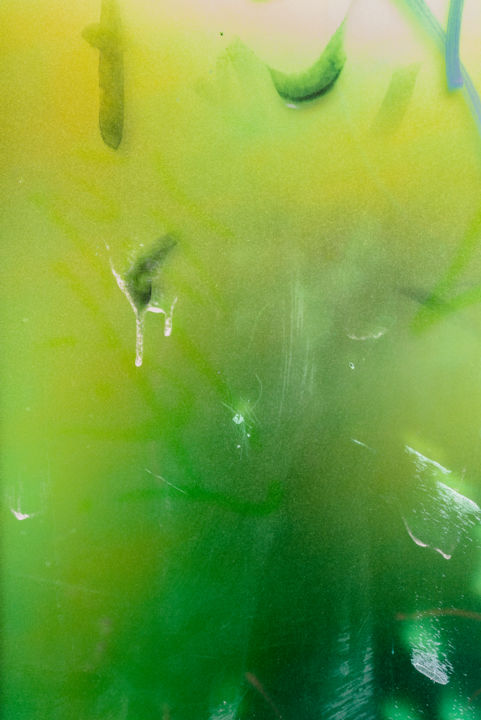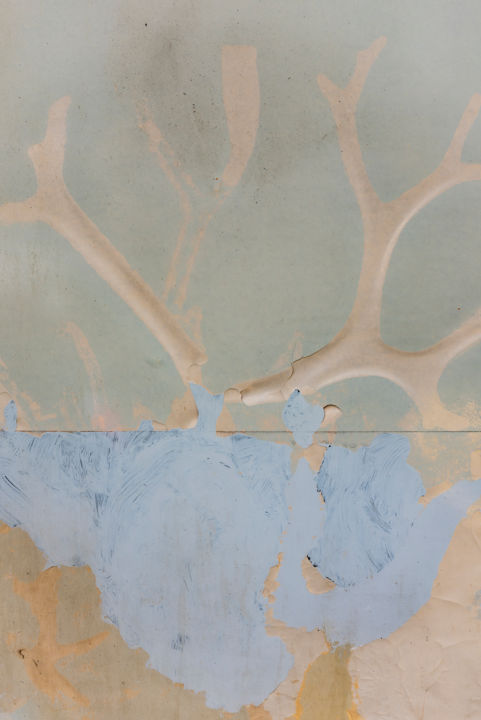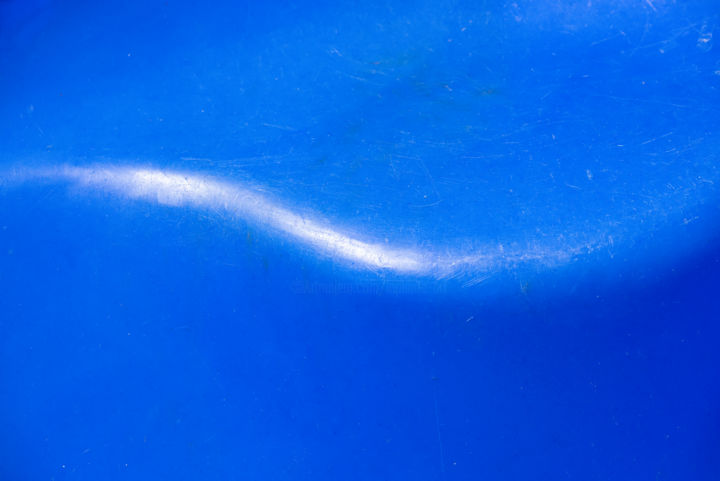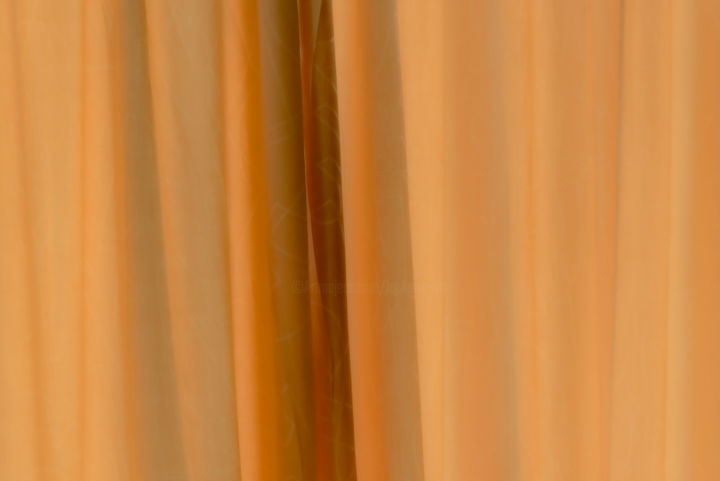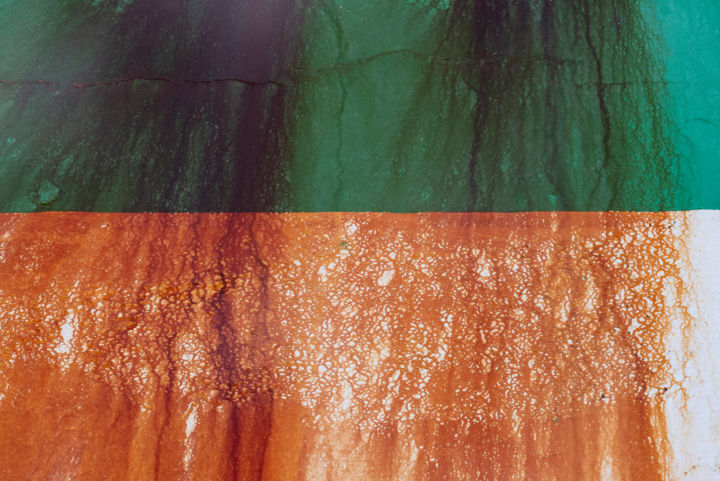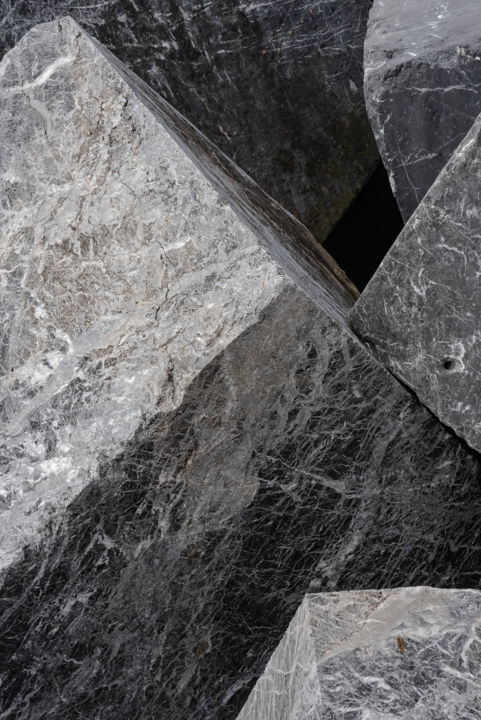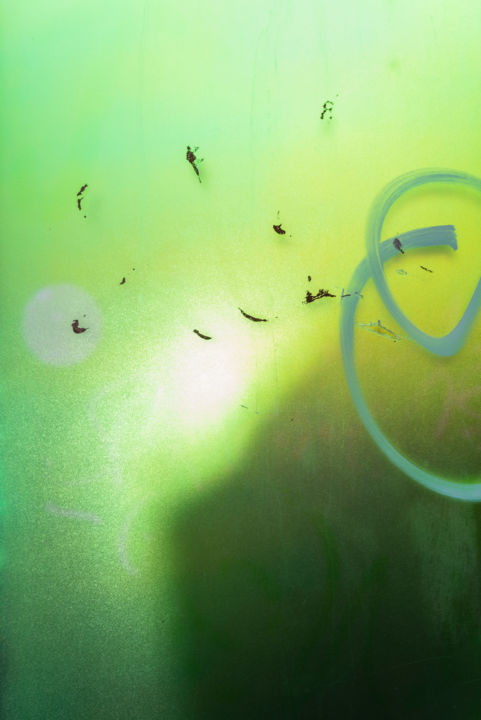What inspired you to create works of art and to become an artist? (events, feelings, experiences...)
I don't know if we are pushed, or if we “become” an artist. What I know is that, when I was little, the word "painting" uttered by someone put me in a sort of trance. I never knew why.
I've always drawn, it's a normal thing for me, but the creation really started by discovering the work of Hans Bellmer. Then came the surrealists and their practices. I went out to buy materials, oils, canvases and brushes, I locked myself in my maid's room and I didn't stop.
What is your artistic background, the techniques and subjects you have experimented with so far?
Surrealist practice taught me letting go, like automatic writing, letting go. It did not leave me, when, thereafter my invoice evolved towards the abstraction. It is also very useful in life, to trust your intuition, which then turns out to be right...
Abstraction opens the door to freedom, with its difficulties and its joys. I worked a lot in oil on canvas, I really like paper, a smooth and satiny paper, where I use ink, pigments. What I really like is the battle between oil and water. I do not work in the figurative, I have never worked from a model since my adolescence. I would make the comparison between an instrumentalist and a composer in music, one will interpret, the other will create. It's a bit the same thing, from my point of view, between figurative painting and abstraction, that said without judgement.
My work likes to transcribe in image, in painting, in drawing, the reality of sensations, of touch in particular, something difficult to translate into words: the "skin fire".
This also extends to the skin of the walls. These human constructions, often old, have witnessed so many events, brief or continuous, serious or trivial. They tell us a story, that of humans, and my pleasure is to capture them in photography, for their beauty, so charged with emotions and history. I also treat this subject in painting on paper, or collages. This interface zone between these walls and our gaze, between the skin, therefore us and the rest of the world, concerns me completely.
What are the 3 aspects that differentiate you from other artists, making your work unique?
My work is a personal search for harmony and balance, with an imbalance factor so that this balance is dynamic. Beauty inspires me, but not aesthetics. Beauty truly feeds me. The deep meaning of my paintings and drawings, as in my abstract photos for that matter, aims for universality, unlike the anecdotal that invades screens and platforms, where “gag” painting leaves me completely cold.
Where does your inspiration come from?
My inspiration is diverse and cannot be commanded. When I paint, I "dive" into a mental state close to meditation where time and space disappear, and I let it go. Everything can be a trigger, a photo, music, a tool, a material or even the residues of an old painting, pieces of paper... The desire must be there, moreover the desire puts us "alive".
What is your artistic approach? What visions, sensations or feelings do you want to evoke in the viewer?
My desire is to touch universality, touch everything that belongs to almost everyone, emotions for example, but not only; I believe that there is a sense of beauty common to all cultures, not that beauty is identical everywhere, but the sense of beauty, yes. Beauty and serenity are my first criteria to which I would add subtlety and delicacy.
What is the process of creating your works? Spontaneous or with a long preparatory process (technical, inspiration from art classics or other)?
My creative process is both spontaneous and long-term. It is a path, rocky at times, but which is based on a practice, of various materials, media, readings, visits to museums and galleries, meetings, dazzling other painters living or dead . But when I "dive", I don't reflect on this background. Creation is a synthetic act of all experiences, feelings, needs, ideas. The work is synthesized like a puzzle, where suddenly everything is in its right place, materials with conceptual content.
Do you use a particular working technique? if so, can you explain it?
The work is of course different depending on the material used, canvas, paper, wood, oil, pigments or others, very different also depending on the size of the support. The gesture is completely different between a small or a large surface. Often I don't remember exactly how I did it and what I did it with. I don't know how to do the same thing twice.
Are there any innovative aspects in your work? Can you tell us which ones?
I feel like a seeker, which has its pros and cons. My search for discoveries, novelties, can go against the result or perhaps relegate it to the background, which I must be wary of. I'm always looking for something new, it's almost a handicap, although I work in series. But I can't pick up a series long after I've finished it.
Do you have a format or medium that you are most comfortable with? if yes, why ?
I really liked working in oil on canvas, but the dangerousness of turpentine and the size of a mask are beginning to weigh on me. So I'm testing alkyd paint, which is less polluting. I love working with inks, pigments for durability, for their transparency and their lightness. Subtlety is dear to my heart. I add to these materials, also threads, hair, papers. I have a predilection for collages (see Fong Chung Ray at the Vazieux gallery, a marvel).
Where do you produce your works? At home, in a shared workshop or in your own workshop? And in this space, how do you organize your creative work?
Until recently, I was in an apartment on the ground floor, with my workshop on the lower level, the light there not being optimal, but that didn't bother me too much. Now I live in Oléron in a house and I will transform a garage into a workshop. For the moment I work in the living room...I like to have everything at hand, visually, because everything can be useful to me without a priori, fabrics from old work leftovers. I also need music, jazz, because I feel it is timeless.
Does your work lead you to travel in order to meet new collectors, for fairs or exhibitions? If so, what does it bring you?
I mainly exhibited in Paris and the Paris region, but also in Spain and London. My exhibitions take me to various places and it is an opportunity to travel, discover and meet new people, gallery owners, artists, collectors, potential buyers, it is one of the pleasures of exhibitions. I'm going to exhibit in Madrid in July and this will allow me to pick up my paintings and visit this city that I don't know, as well as a personal exhibition that I am doing in Cher in May and where I will be going.
How do you imagine the evolution of your work and your career as an artist in the future?
For the future, I will continue to seek, I do not know how to do otherwise, concentrating on selective exhibitions both in terms of the professional status of the exhibitors, and the choice of a coherent line in what is shown. I work, I work, I try to exhibit, and so much the better if my work pleases whoever it pleases..
What is the theme, style or technique of your latest artistic production?
My last artistic work, in painting, highlighted the history and experience of the walls, witnesses of our lives, of history and results in productions (50x70 cm) on paper mixing oil and water, which I will put in correspondence with the photos of walls, abstract as I practice them and I like them. What painting can bring and what photography can bring, side by side in a way.
Can you tell us about your most important exhibition experience?
The choice is difficult to talk about the most important exhibition for me. There are of course the big fairs, but I am thinking above all of the Festival d'Arts Actuels Ré-Oléron in which I participated 3 times, each time with different media: photography – plastic art – painting. The president who unfortunately died last year, Catherine Métais, had a sure and sharp taste, demanding and uncompromising and the whole was therefore very consistent in quality and the participants the same. I had the opportunity to propose works that were particularly close to my heart, sometimes difficult to show. I am referring to a body of work on women in their sexuality and their positioning in the various cultures of the world, a vast subject not always accepted. I was happy to have the opportunity to show this work.
If you could have created a famous work in the history of art, which one would you choose? And why ?
If I had to choose a famous work of art, I would hesitate between the work of Antoni Tapiès and that of Cy Twombly, between the hard-hitting force of one and the delicacy of the other, being myself torn between these two poles.
If you could invite one famous artist (dead or alive) to dinner, who would it be? How would you suggest he spend the evening?
The evening to spend with an artist would not necessarily tempt me, the ego of some being a little difficult, especially Picasso, or Baselitz when we know how he considers women artists... Also go and listen to the podcast on Picasso on “Did Venus wax her pussy? », this corresponds exactly to what I have always guessed about Picasso. Perhaps Helen Frankenthaler in terms of her freedom, and her simplicity I think. Gauguin or Matisse appeal to me, but I don't know if visiting them would interest me. Otherwise, I have no predilection or admiration for anger, and many are too alcoholic for my taste. I would say Pierre Bonnard, I really like his almost abstract work for me. I can see myself picnicking by the water's edge with him, his wife and children.




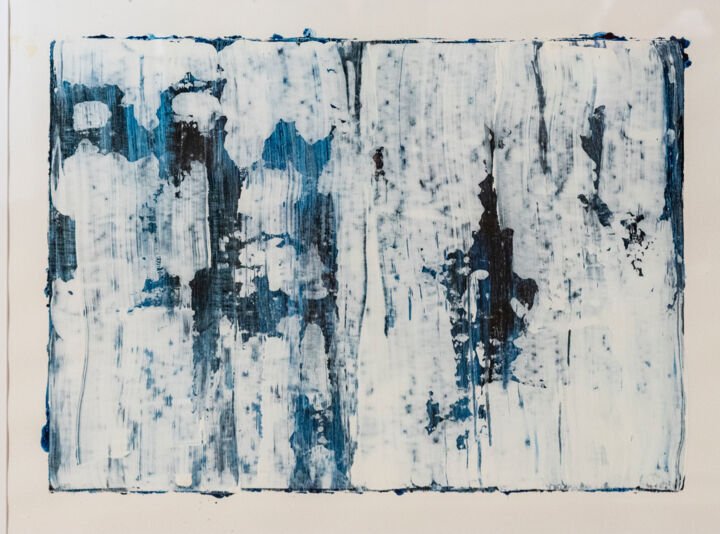




 Olimpia Gaia Martinelli
Olimpia Gaia Martinelli
